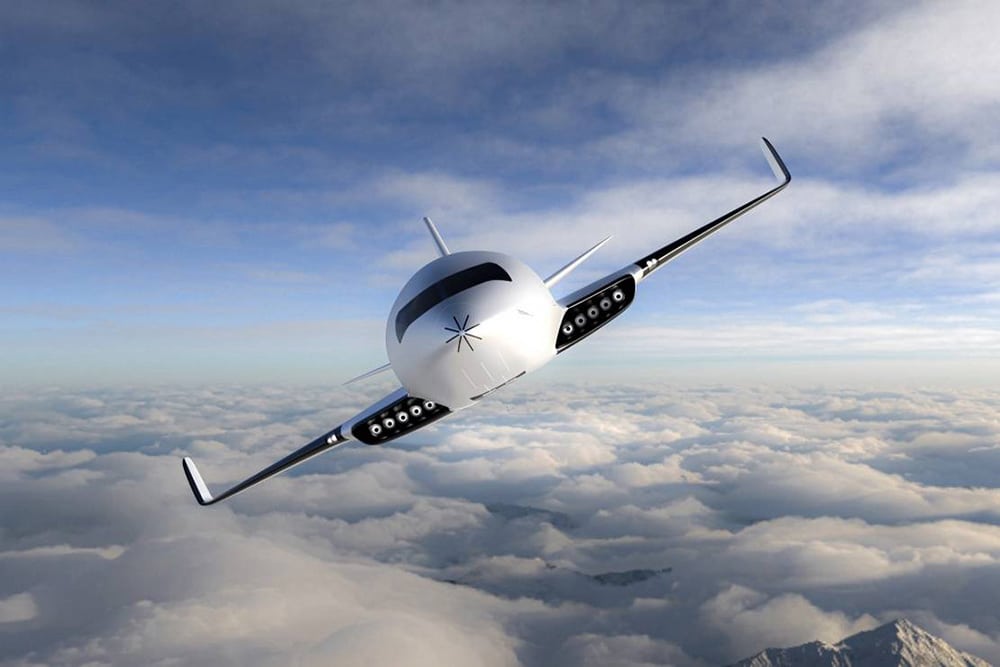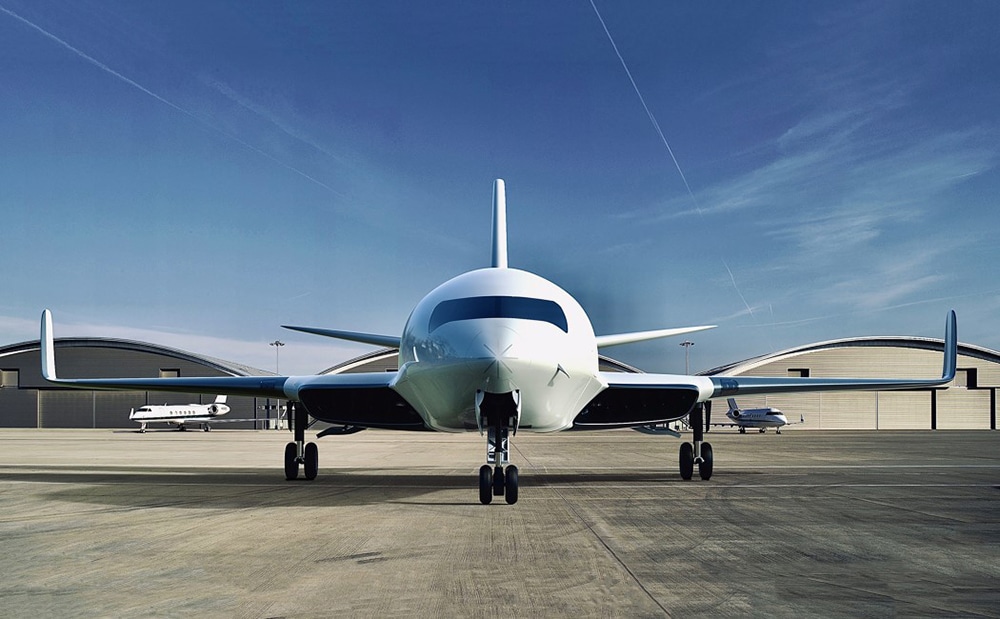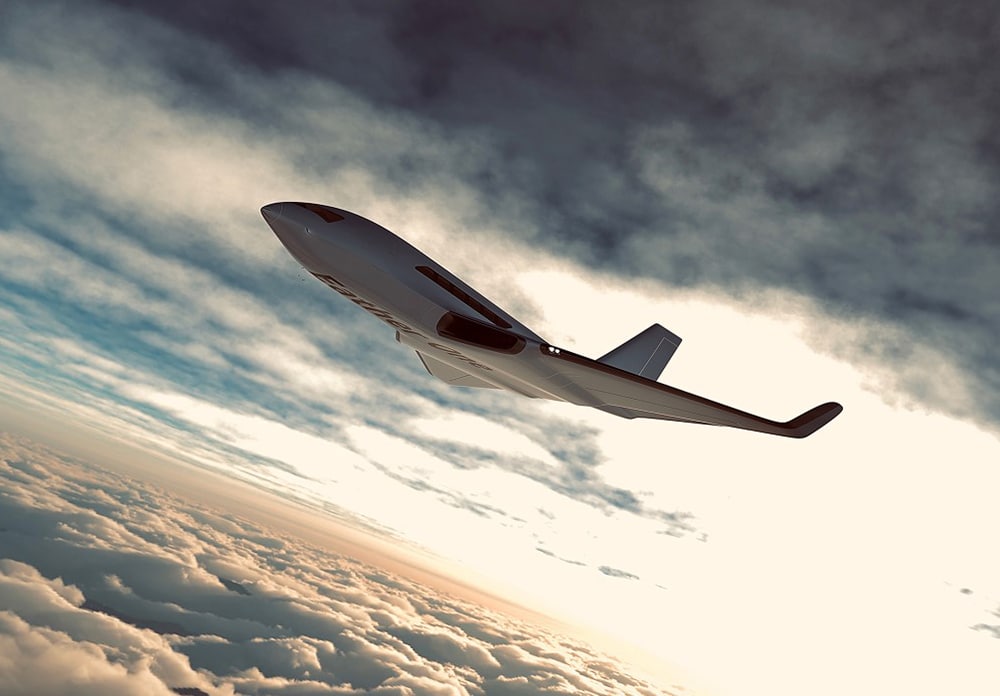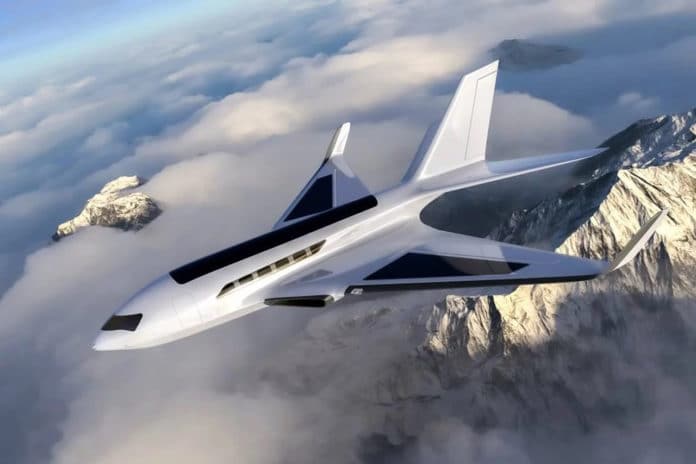These days, many aircraft manufacturing companies are focusing on developing the next generation of electric and hybrid-powered aircraft. However, the Warsaw-based designer, Michal Bonikowski, came up with a potentially revolutionary aeronautical project, which could undermine the need for traditional engines, bulky fuel tanks, and large batteries for propulsion.
The concept, called “Eather One,” uses friction between the air and the high speed of the machine as the main energy source that can be recycled as needed.

In all sincerity, its creator does not deny having drawn inspiration from one of Airbus’ latest projects. In particular, from the one called Maveric, where essentially the airplane consisted of a continuous structure with a very large cabin capacity and with a line that did not include interruptions between the wings and the rest of the fuselage. All this to greatly optimize the aerodynamic efficiency and creating a uniform object in all its parts, minimizing the energy needs to keep the aircraft in flight.
The basic idea is to generate electricity during the movement of the airplane itself. In the stratosphere and troposphere, when reaching high speed, electrical charges are formed on the surface of the aircraft, which, if properly collected and exploited, can feed the batteries on board the airplane.

The Eather One looks like any other airplane but would be equipped with triboelectric nanogenerators in the wings to help harness external mechanical energy – the friction generated from vibrations in the airframe and bend of the wings. These nanogenerators then convert mechanical energy directly into electrical energy.
In this way, the Eather One will have the advantage of being able to contain much smaller batteries on-board than those of current projects. This will save weight, providing a further increase in overall performance.

However, Bonikowski admits that the concept of this plane requires a certain amount of batteries when there is no friction, such as when take-off and landing. In this case, the aircraft will need some battery packs in order to complete them.
Obviously, it is just a concept, an idea to be developed but which certainly deserves attention. Although there is a lot to work needed to understand if it is actually translatable into something practical, it represents a new approach to the problem of reducing weights and volumes of batteries, which currently harasses designers.
Also, the concept identifies a futuristic solution to the problem of how to make air travel more efficient and less polluting.
